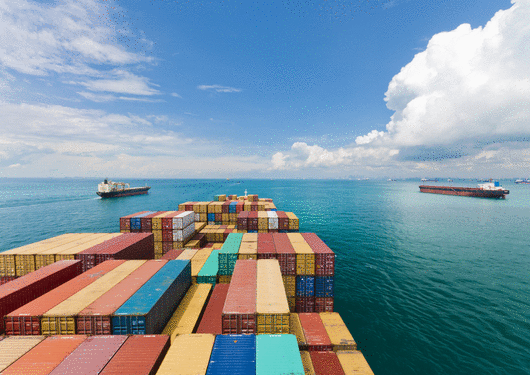
Visit Our Sponsors |
|
|
|
|
|
|
|
|
|
|
|
|
|
|
|
|
|
|
|
|
|
|
|
|
|
|
|
|
|
|
|
|
|
|
|
|
|
|
|
|
|
|
|
|
|
|
|
|
|
|
|
|
|
|
|
|
|
|
|
|

IBISWorld estimates that deep sea cargo transportation service prices have been falling at an average annual rate of 1.5 percent from 2013 to 2016 due to overcapacity and falling fuel prices. Low shipping prices have hindered many shippers’ profitability to such an extent that earlier this year, the world’s seventh-largest container carrier, Hanjin Shipping Company, filed for bankruptcy protection. Hanjin is not the only company that is suffering, and despite numerous attempts to alleviate the pressure, troubles remain. Continued pressure on stress factors like financial risk, uncertain operating costs and waning demand for services will cause a shipping bubble to grow and burst, triggering devastating effects on downstream transportation markets. Continued distress will cause a shipping bubble to grow and burst, triggering devastating effects on downstream transportation markets.
The primary factor harming container shippers is overcapacity in relation to market demand. In 2016, IBISWorld estimated that were are about 5,000 container shipping vessels worldwide, with a combined capacity of nearly 17 million twenty-foot equivalent units (TEUs). Prior to the 2008 recession, healthy international trading encouraged shippers to invest in new, larger ships to boost their market share. However, demand for international trade plummeted with the recession and has barely recovered since. In 2016, weak economic growth, particularly from emerging economies like China and India, resulted in sluggish demand for waterborne shipping services. Although suppliers have dropped their prices significantly to remain competitive, the supply gap is still wide enough that market rates should be far below what shippers require to cover their costs. In an attempt to alleviate damaging competitive pressures, several shipping companies have signed cooperative agreements, including pacts such as the 2M agreement and the G6 alliance. Under these partnerships, suppliers share both vessels and cargo with one another, ensuring that no single company will be forced to absorb lost revenue on a shipment that cannot be filled to capacity. While these agreements have helped to narrow the gap between supply and demand in the market, demand for overseas shipping services still lags behind what would be necessary to ease suppliers’ financial burdens.
Furthermore, deep sea cargo shippers, like many other transportation service providers, have suffered as a result of low oil prices. IBISWorld estimates that bunker fuel prices have crashed alongside crude oil prices, falling at an estimated rate of 25.1 percent per year on average since 2013. While this has cut suppliers’ annual fuel costs substantially, shipping rates have fallen in lockstep, leaving suppliers unable to pad their slim profit margins. While rebounding crude oil prices in the coming years will pressure shippers to increase service prices, demand is unlikely to rise in lockstep, intensifying financial hardship across the market.
The Outlook
Two factors have the potential to decimate the shipping market. First, if crude oil prices jump unexpectedly, suppliers will be forced to raise rates overnight, dampening demand for shipping services and leaving many shippers without financial backing to support their considerable expenses. Second, if international trading doesn’t recover, suppliers may find themselves in this position anyway. Shipping companies must retire some of their assets to reduce market supply, or additional bankruptcies may harm downstream transportation companies and shipping buyers alike.
RELATED CONTENT
RELATED VIDEOS
Timely, incisive articles delivered directly to your inbox.







